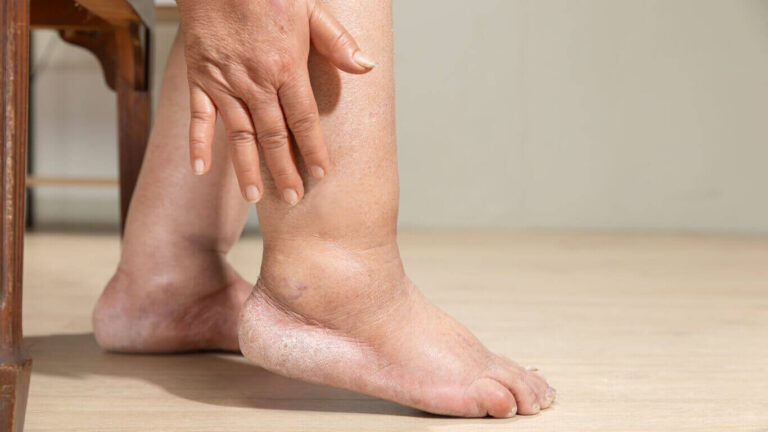Lymphedema Symptoms
Recognizing Lymphedema Symptoms: Early Signs and What to Look For
Lymphedema is a chronic condition affecting the lymphatic system, leading to swelling in various body parts. Left unchecked, it can significantly impact daily life and lead to complications. The key to managing lymphedema effectively lies in early detection. Recognizing lymphedema symptoms early allows for timely intervention and better treatment outcomes. In this article, we’ll guide you through the early signs of lymphedema and how to spot them before the condition progresses.

What Is Lymphedema?
Before discussing the symptoms, let’s quickly understand lymphedema. Lymphedema occurs when lymphatic fluid doesn’t drain properly, causing a buildup of fluid in the tissues. This leads to swelling, discomfort, and potential long-term damage to the affected area. It can occur as a result of surgery, radiation treatment for cancer, or congenital conditions that affect lymphatic vessels.
Early Signs of Lymphedema: What to Watch For
Identifying lymphedema symptoms early can make a significant difference in preventing its progression. Here are some of the first signs of lymphedema to keep an eye on:
- Swelling in the Affected Area
The most common and noticeable symptom of lymphedema is swelling. Initially, the swelling may be mild and fluctuating but can become more persistent over time. It typically affects the arms, legs, or other areas where lymph nodes or vessels have been compromised.
- Early Stage: Swelling may come and go, especially at the end of the day.
- Progression: Over time, the swelling becomes more permanent and difficult to reduce with rest or elevation.
- A Feeling of Heaviness or Fullness
In the early stages of lymphedema, many people report feeling heaviness or fullness in the affected limb. This sensation may be mild initially but tends to worsen as the condition develops.
- Heaviness: You might feel like your arm or leg is weighted down.
- Tightness: Skin around the swollen area may feel tight and stretched.
- Limited Range of Motion
As the swelling increases, you may notice a reduced range of motion in the affected area. This is often because the fluid buildup affects the tissue, causing stiffness.
- Joint Movement: You may struggle to move your arm or leg fully.
- Tightness: Skin and soft tissues may feel more rigid, making it difficult to bend or stretch.
- Skin Changes and Infections
Lymphedema can lead to changes in the skin texture and appearance. Early on, you might notice:
- Skin Thickening: Skin may feel firmer or tougher as fluid buildup increases.
- Skin Infections: Swollen areas are more prone to infections, particularly when skin breaks occur.
- Pitting Edema
In the early stages of lymphedema, you may notice that the swelling in the affected area leaves an indentation when you press on it. This pitting edema indicates the fluid buildup is still relatively soft and mobile.
- Pitting: Apply pressure to the swollen area; if it leaves a visible indent, this is a sign of pitting edema.
- Progression: As the condition worsens, the swelling may become non-pitting, indicating more severe fluid buildup.
Causes of Lymphedema: What to Know
Understanding the causes of lymphedema is essential for early detection. Lymphedema can be primary, due to congenital or genetic issues with the lymphatic system, or secondary, often resulting from external factors such as surgery, radiation, or infections.
Common Causes of Secondary Lymphedema:
- Cancer Treatment: Surgery or radiation therapy that removes or damages lymph nodes.
- Infection: Infections that affect the lymphatic vessels can lead to lymphedema.
- Injury or Surgery: Removal of lymph nodes during procedures such as mastectomy or pelvic surgeries.
When Should You See a Doctor?
If you notice any of the above symptoms, it’s essential to seek medical advice as early as possible. Lymphedema treatment is most effective when started early, and a healthcare professional can confirm whether you have lymphedema or another condition. Some signs that require immediate medical attention include:
- Sudden, severe swelling that doesn’t subside.
- Redness, heat, or pain in the swollen area (signs of infection).
- Difficulty breathing or swelling in the chest area.
Treatment Options for Lymphedema
Early intervention can help manage lymphedema and prevent it from worsening. Common treatment options include:
- Compression Therapy: Using compression garments to reduce swelling.
- Manual Lymphatic Drainage (MLD): A specialized massage technique to promote lymph fluid drainage.
- Exercise: Gentle exercises to improve lymphatic circulation.
- Surgical Options: In severe cases, surgery such as lymphovenous anastomosis or vascularized lymph node transfer can help reroute lymph fluid.
Conclusion
Recognizing the early symptoms of lymphedema is crucial in preventing the condition from progressing and causing long-term health issues. Swelling, a feeling of heaviness, limited range of motion, skin changes, and pitting edema are all early warning signs that require attention. If you or someone you know is experiencing these symptoms, don’t hesitate to seek medical advice. Early diagnosis and treatment can help manage the condition and significantly improve the quality of life.
Frequently Asked Questions (FAQs)
- Can lymphedema be prevented? While it may not always be preventable, early management of risk factors, such as avoiding infection and injury to lymph nodes, can reduce the likelihood of developing lymphedema.
- What is the difference between primary and secondary lymphedema? Primary lymphedema is caused by congenital malformations of the lymphatic system, while secondary lymphedema results from external factors like surgery, radiation, or infection.
- Is lymphedema a painful condition? Lymphedema can be uncomfortable and cause pain, especially as swelling increases and affects mobility. Early treatment can help reduce discomfort.
- What happens if lymphedema is left untreated? If left untreated, lymphedema can lead to chronic swelling, tissue damage, and an increased risk of infection. In severe cases, it can lead to lymphangitis or elephantiasis.
- How is lymphedema diagnosed? Lymphedema is typically diagnosed through a physical exam, patient history, and imaging tests like lymphoscintigraphy or ultrasound to evaluate lymphatic function.
